May 14, 2024
Planting Pretty Ponds and Gardens, Seed Saving Libraries
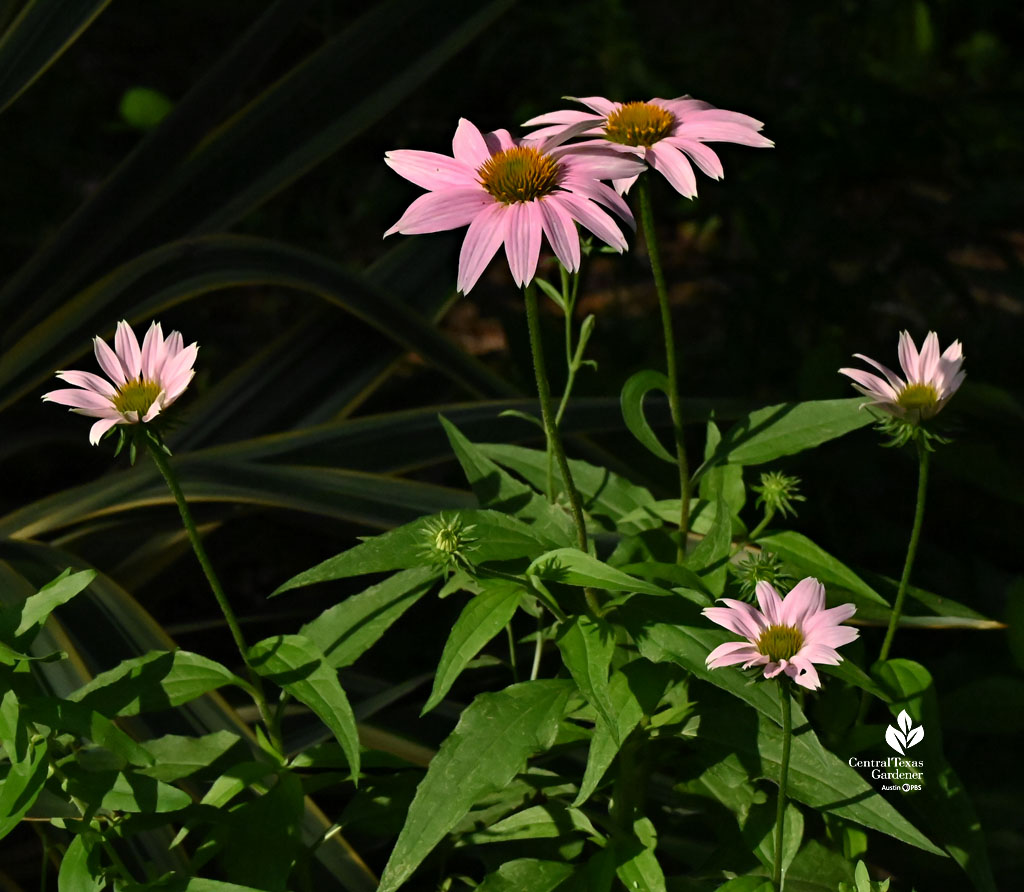
I never had luck with native coneflowers until they showed me where they wanted to be. As too much shade starts to impact their desired spot, they edge closer and closer to sunnier borders, but they still get sun breaks during the day.
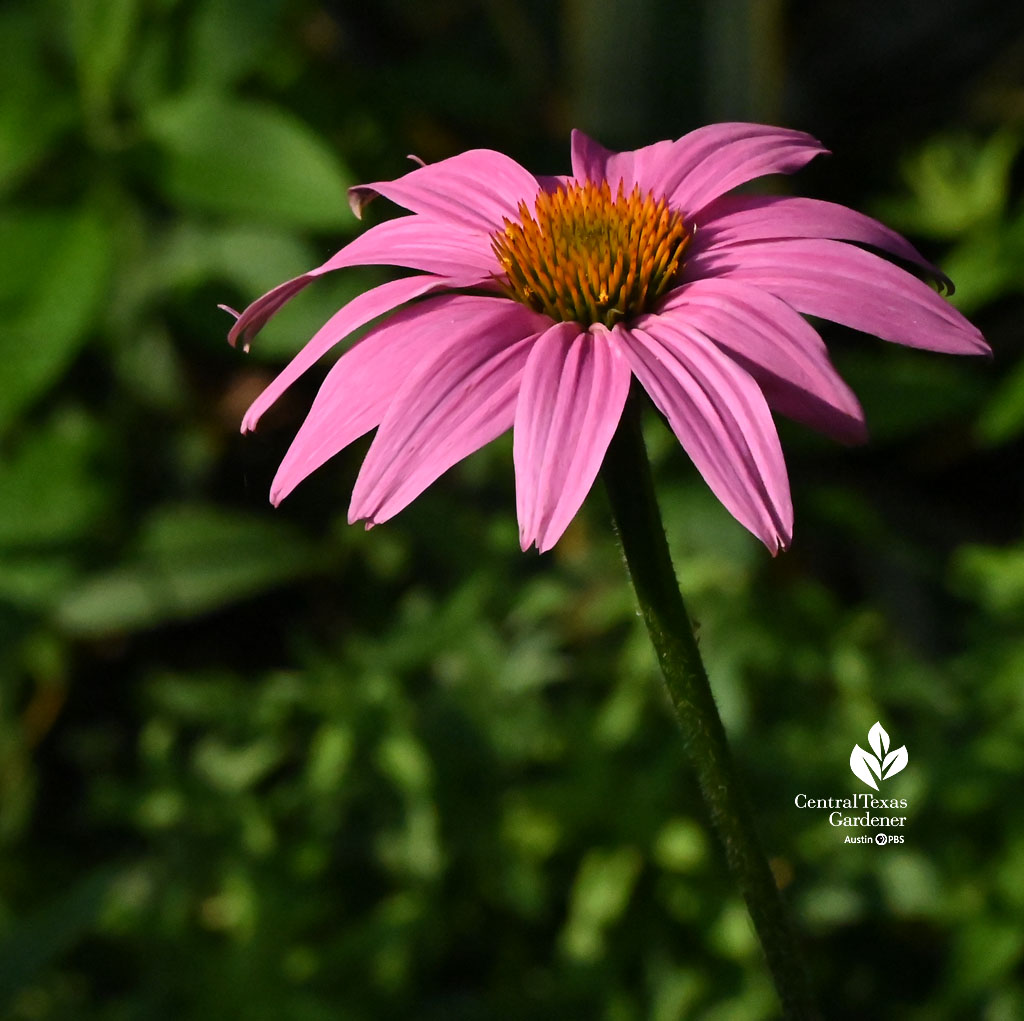
I love these multi-taskers since pollinators of all kinds sip nectar, birds love their seeds, and solitary bees snuggle into their stems to hibernate in winter. These are the purple coneflower (Echinacea purpurea), but there are many other native species, including angustifolia and pallida.
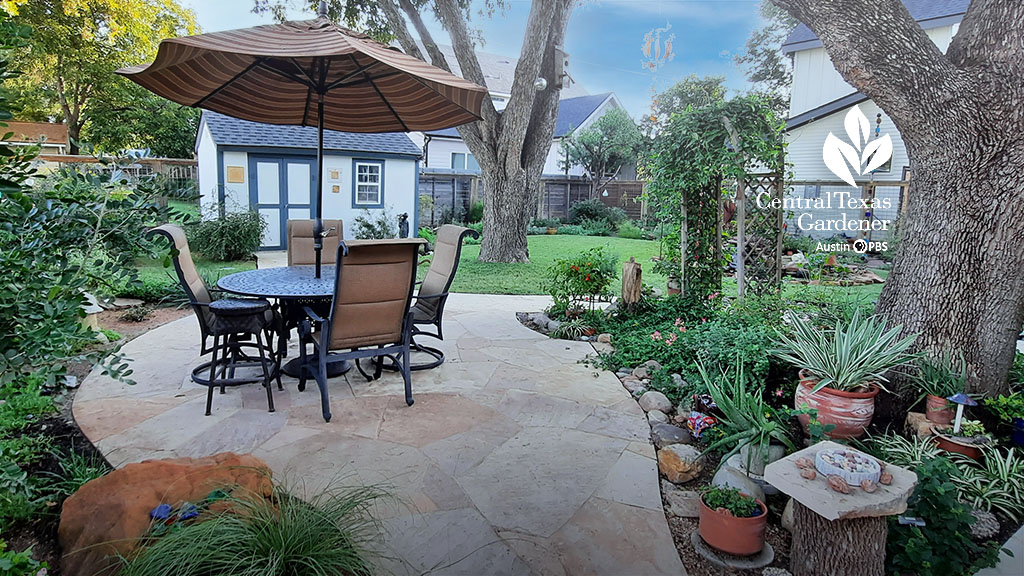
Nancy Hall has gone through the same “right spot” quandary since 1985 when she bought her house. She admits to a lot of mistakes since she started with a blank lawn and chain link fence. But along the way, she figured out how to match plants with Texas weather and her Blackland Prairie clay soil. Read CTG’s blog about her garden.
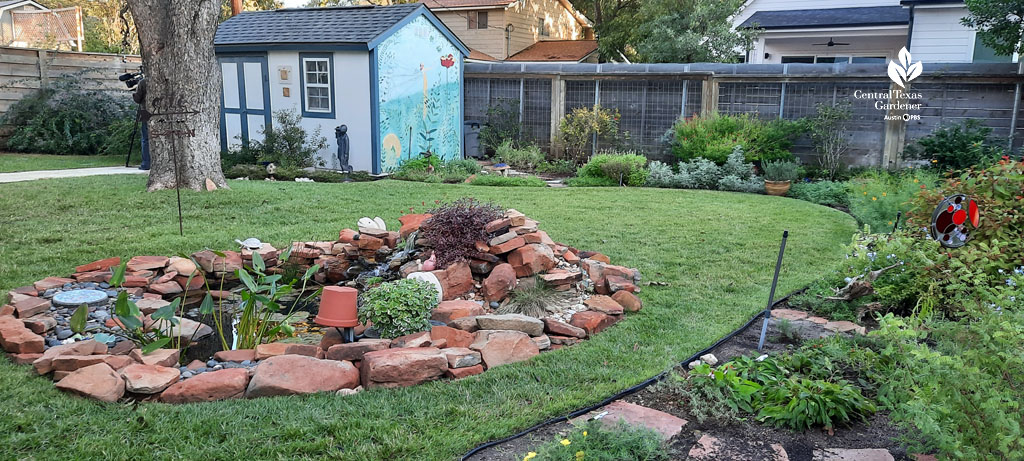
She starts our program this week to highlight the Austin Pond and Garden tour, presented by the Austin Pond Society on June 1st and 2nd.
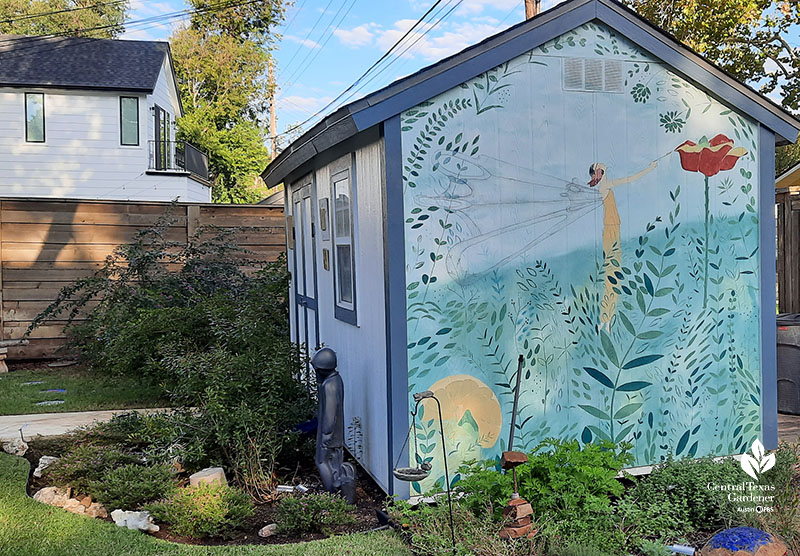
Meet Nancy on June 1; she looks forward to answering your questions! You’ll want to check out her artwork, too.
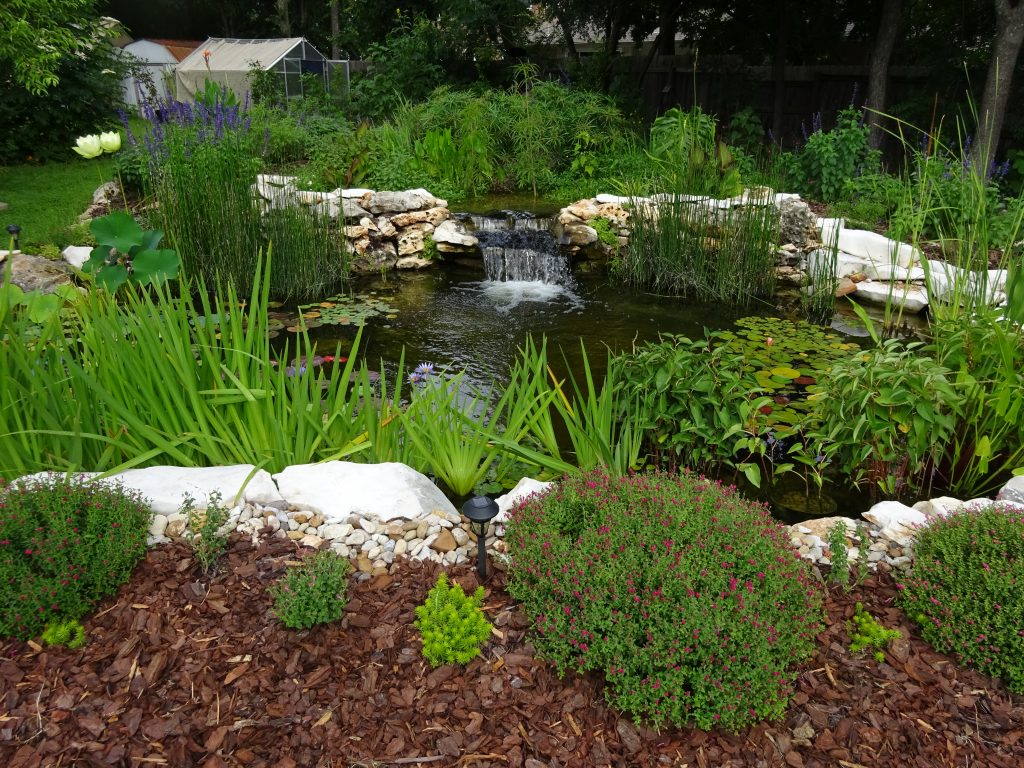
As always, stroll through incredibly beautiful gardens and ponds, and meet the designers, from DIY gardeners to pro teams. Discover ponds big and small (the one above is Lisa and Shane Lamb’s) and get details from fish to filters. Find out how to get tickets and preview the gardens.
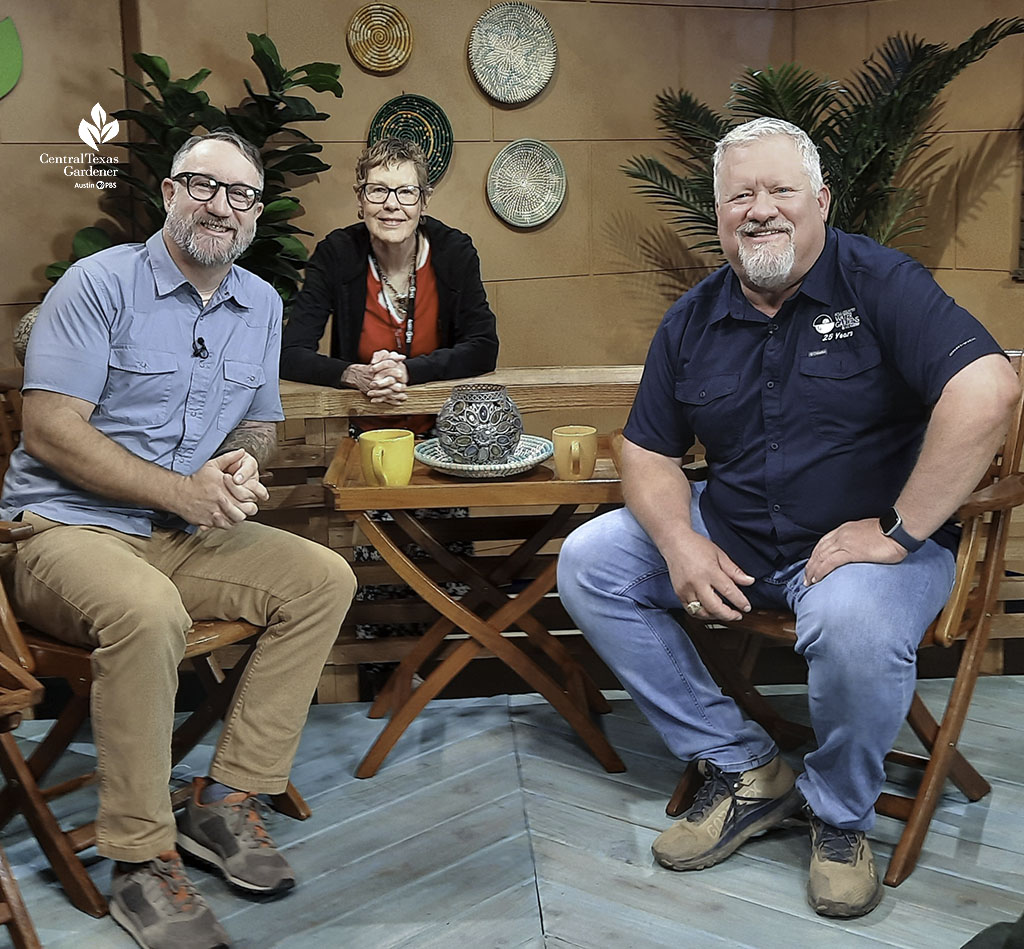
Then, we get together with Steve Kainer of Hill Country Water Gardens and Nursery, now celebrating its 25th year! My records don’t go back that far, but he was involved with CTG pretty quickly. I do know that he joined us in 2004 to talk about disappearing fountains, a unique idea for us all back then! Steve’s been a great friend and trusted advisor to us all while he grew his nursery as we’ve grown CTG.
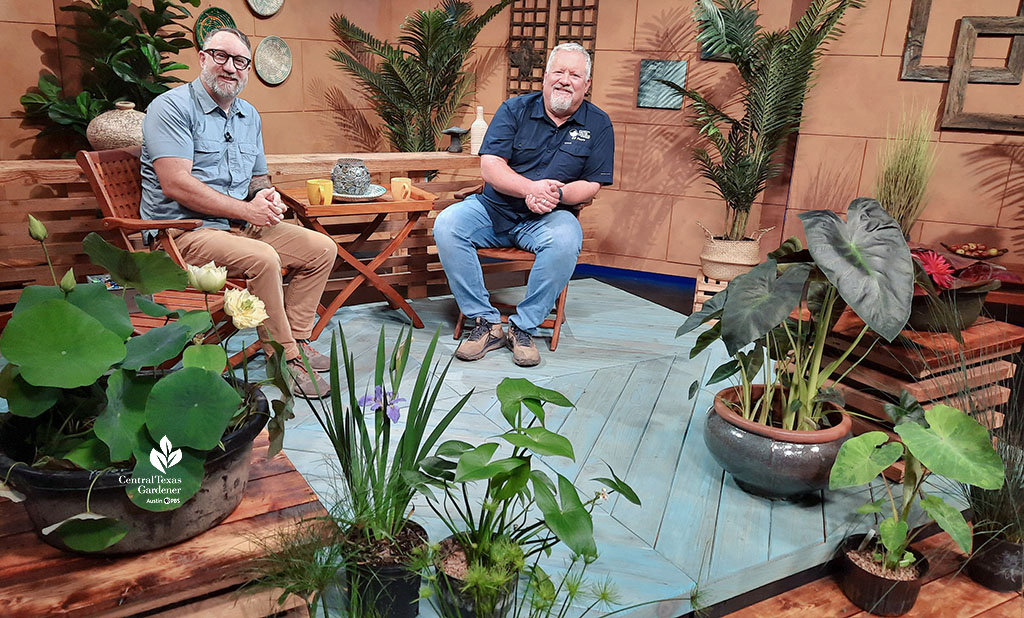
He joins John Hart to enchant us with gorgeous foliar and flowering plants that are mostly cold hardy. His standout colocasias (taro/elephant ears) are not invasive, be assured! He covers plant details with tips for dividing and fertilizing.
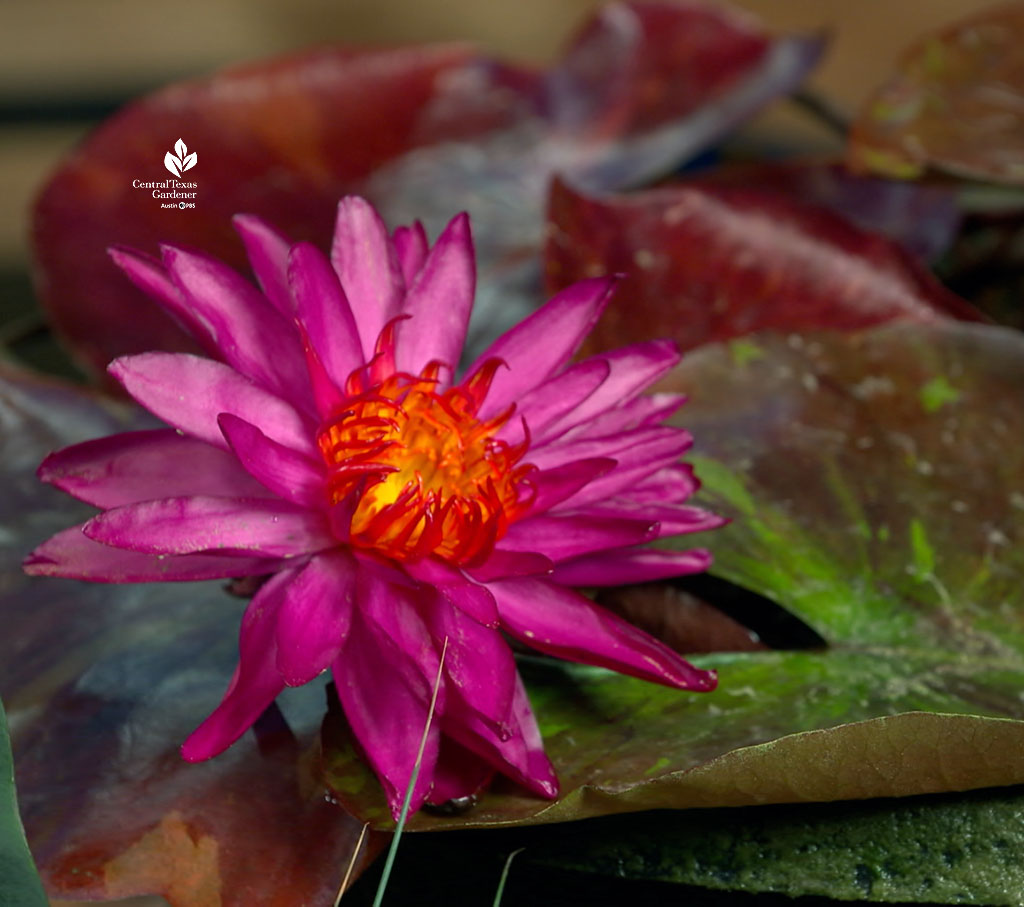
One of his showoffs is ‘Sangria’ water lily, a beauty that’s fine through winter.
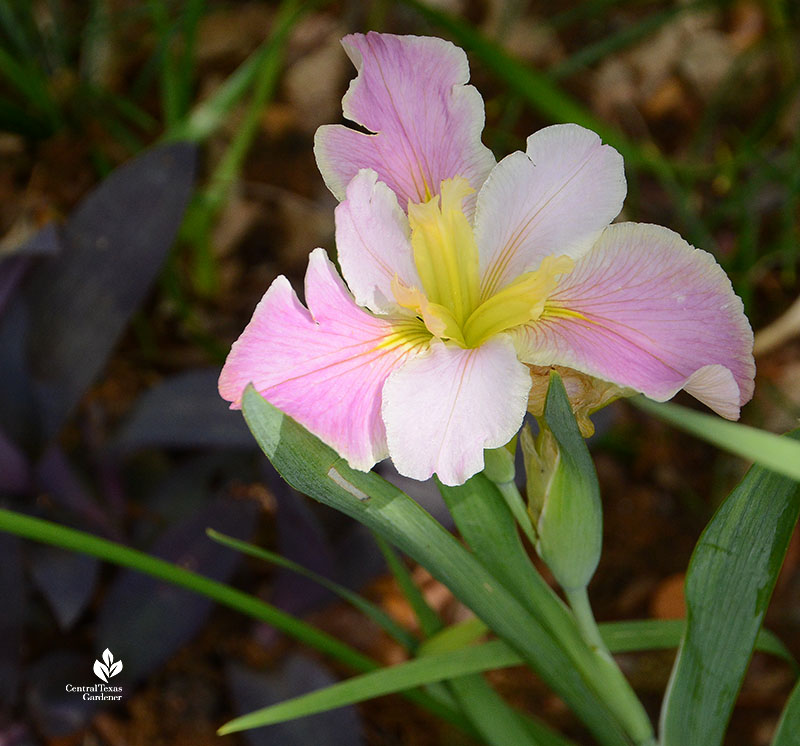
And one of his pond or bog plants that’s a landlubber, too: Louisiana iris! A dear friend passed along mine over 20 years ago, and it still blooms every year in its part shade spot. It gets no special care from me per water or fertilizer, either.

And look at this fabulous lineup for their 25th Annual Spring Celebration! Great talks, live music, fun vendors, food, drink and plants! This Saturday, May 18 from 9 a.m. – 8 p.m.
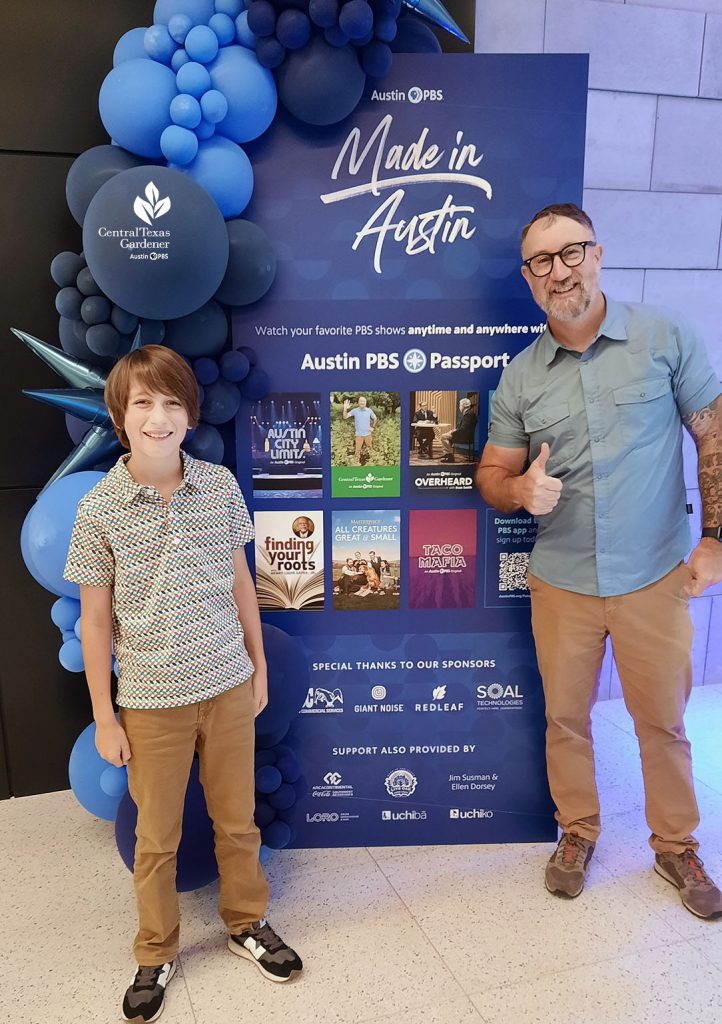
This week we also launch a first-timer guest, Adler Asher, Blackshear Elementary student and son to John Hart and Bonnie!
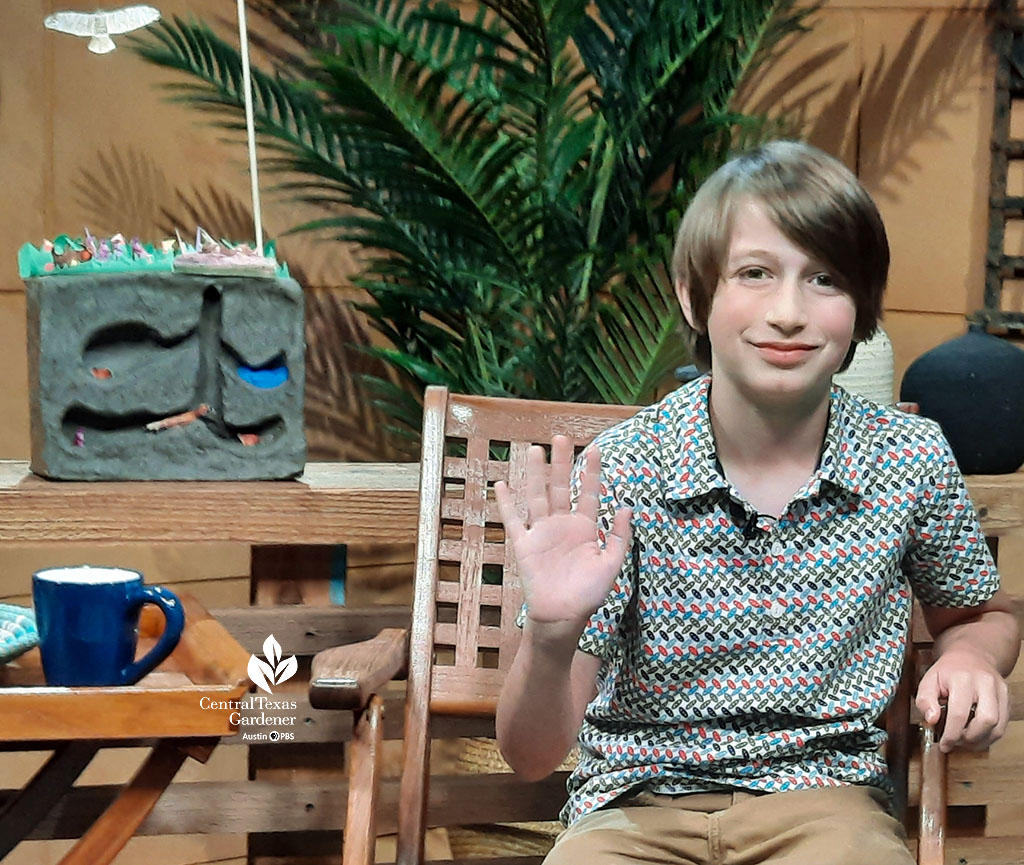
Adler’s no stranger to prairie restoration, since he’s joined his dad on many expeditions. So, he explains why prairies disappeared and why restoration now matters so much to our future ecology.
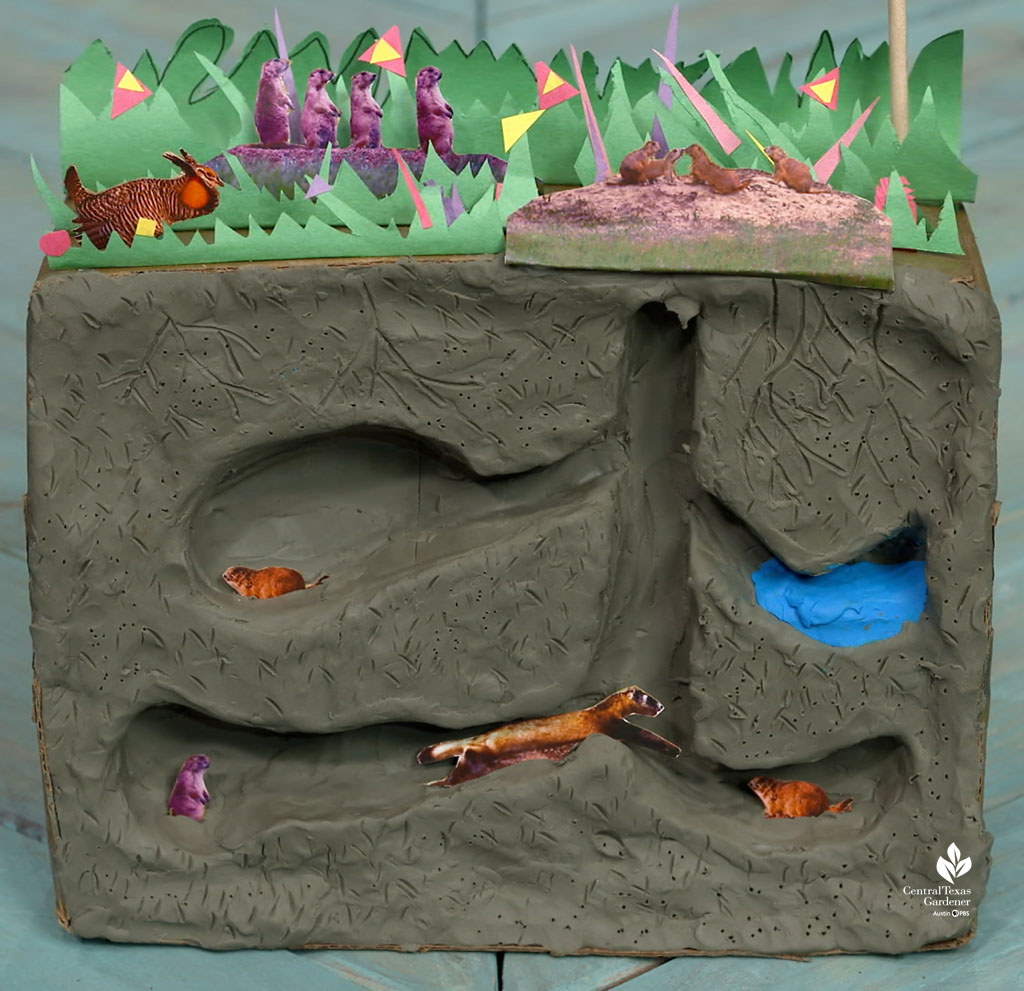
They support prairie dogs that in turn support the endangered black-footed ferret, prairie chicken and Ferruginous hawk. All of us in the studio were so impressed that he pronounced “ferruginous” without a stumble. I sure couldn’t!
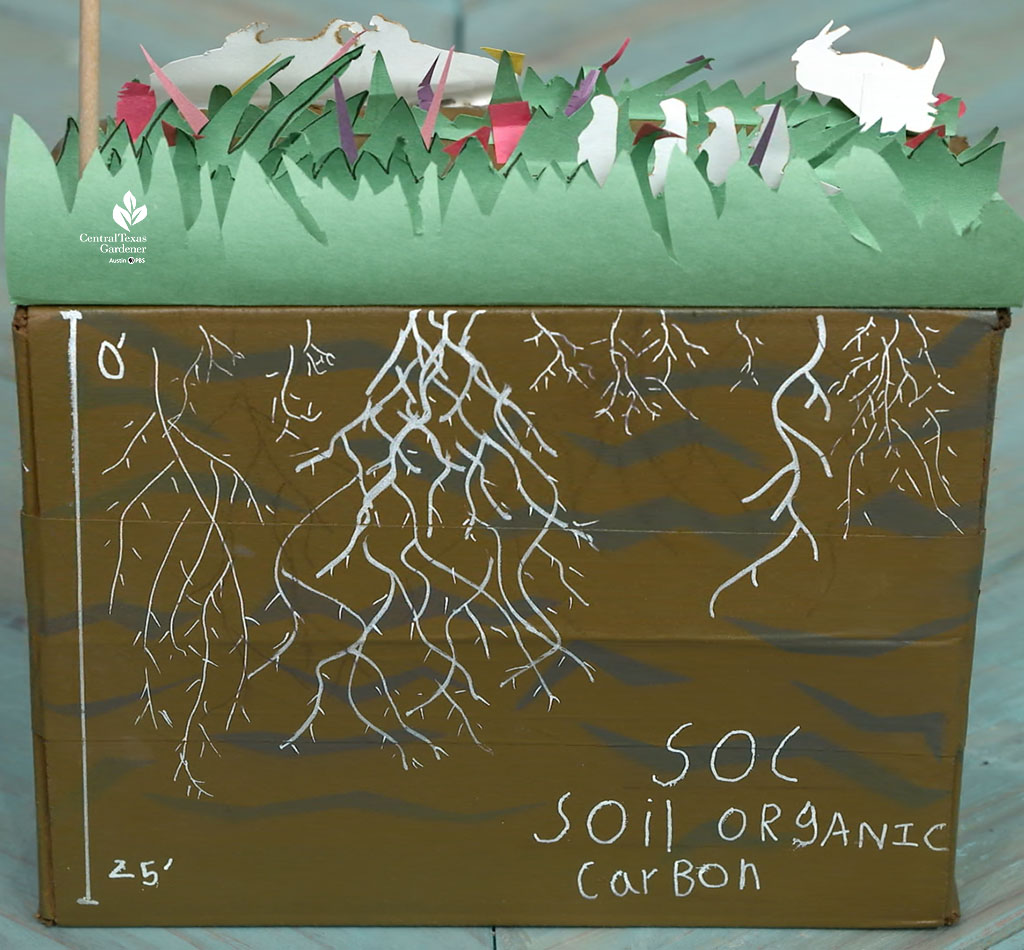
Because many prairie plants have deep roots, they help stabilize soil and conserve water, and they lock carbon in the soil as soil organic carbon.
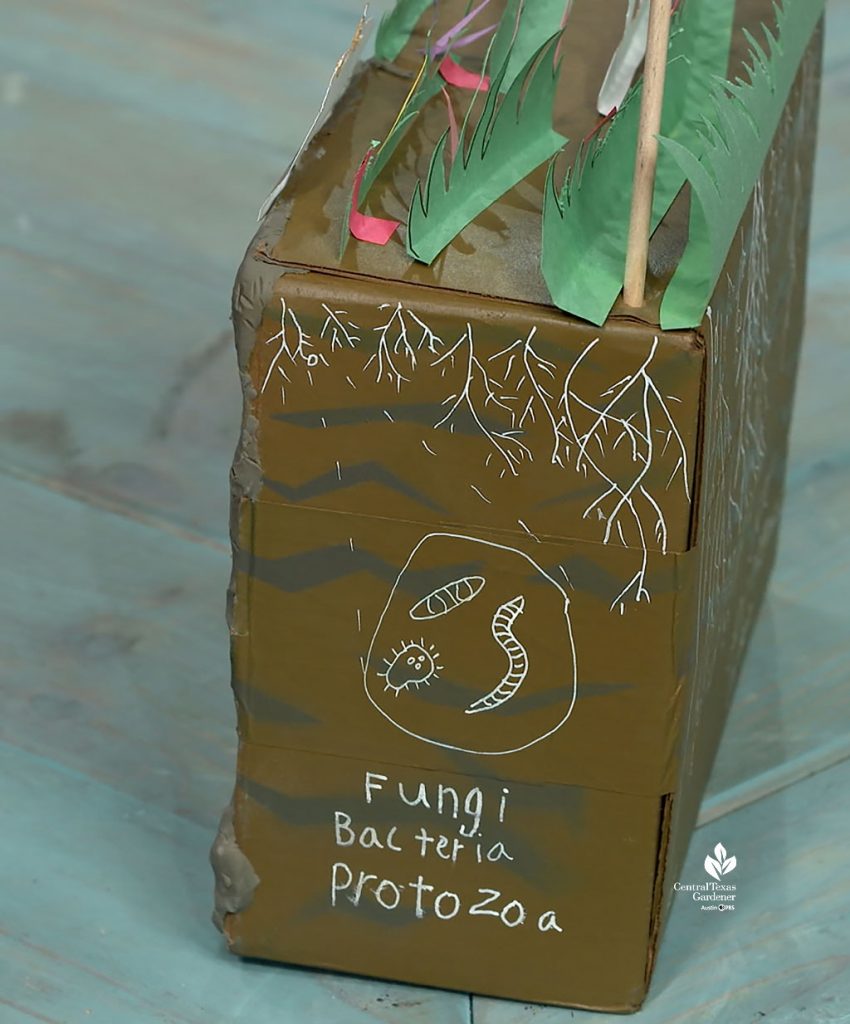
“The prairie soils also are home to a universe of microbes that form beneficial relationships with grasses and flowers,” he reminds us. And of course, they provide habitat for wildlife and nourish our sense of wonder! (And watch our conversation with soil health practioner Andie Marsh about the soil food web!)
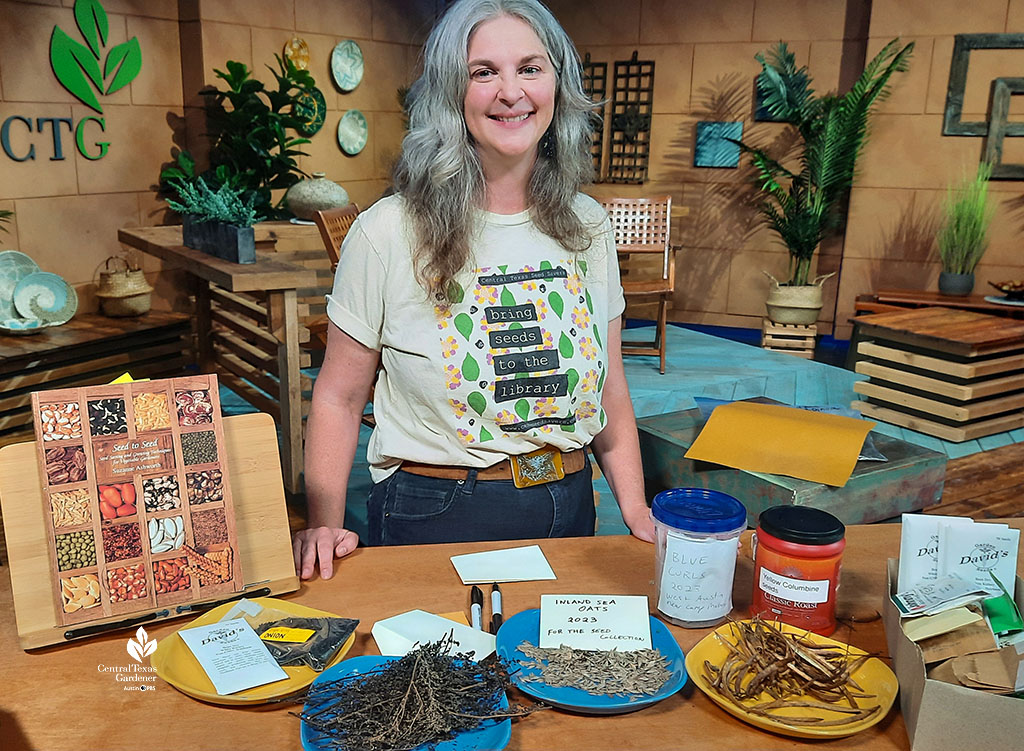
Seeds are a big part of our future, especially as native plants become endangered. So, landscape consultant Colleen Dieter founded Central Texas Seed Savers in 2018, now a project of Fruitful Commons. Just since then, they’ve shared tens of thousands of seed packets with the community! One of the programs they support are seed libraries where you can check out seeds to plant the future.
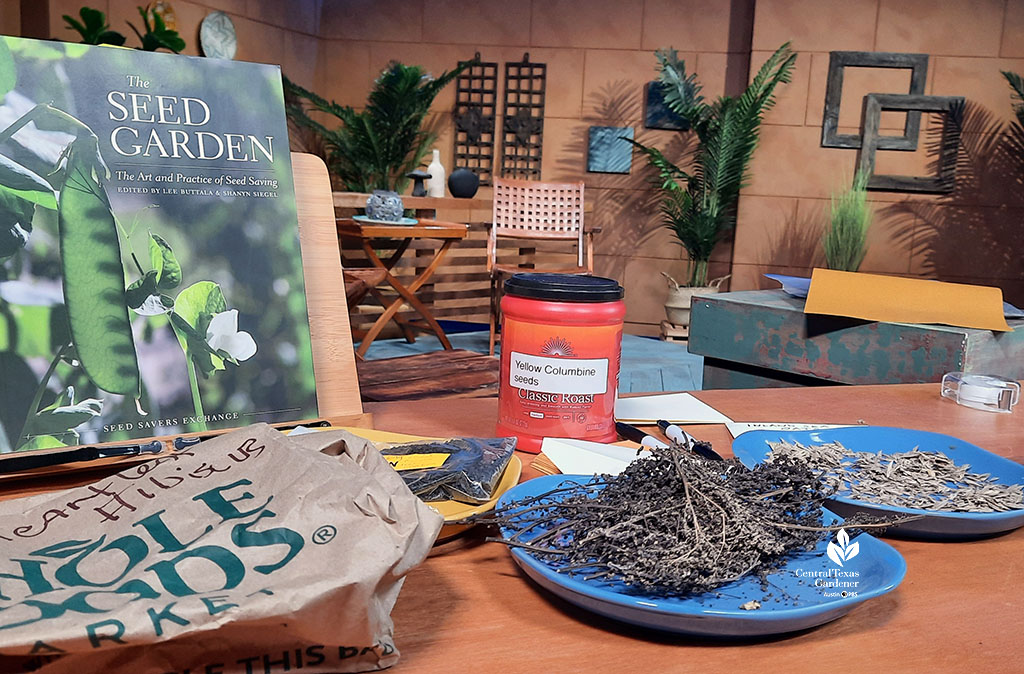
Colleen explains how to package your seeds to deposit at the circulation desk or book drop. Most of the Austin Public Library branches participate and a lot of suburban and exurban libraries in Central Texas have seed collections, too. You do want to make sure your seeds are completely dry so they don’t get moldy (I have made that mistake, believe me!).
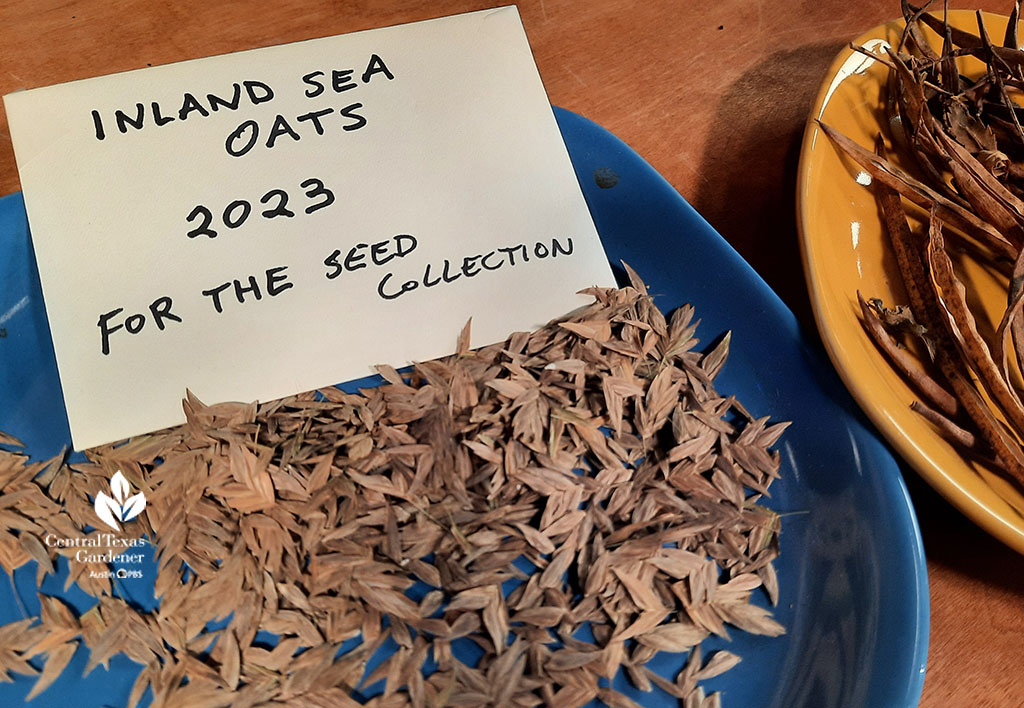
Write on a card what seeds you’re donating. “And the date that the seeds were collected, because the seeds, as they age, lose their ability to sprout, so we need to know how old they are.” Colleen explains. “And then write “For the Seed Collection” so the librarians will know what this is.”
Join fellow gardeners for fun seed swap get-togethers. Get dates at Central Texas Seed Savers, on their Instagram and on Facebook.
And listen to “Horticulture Hangover” with Colleen and Leah Churner every Saturday morning from 8 – 9 a.m. and stream anytime!
Watch now!
Thanks for stopping by! Linda

